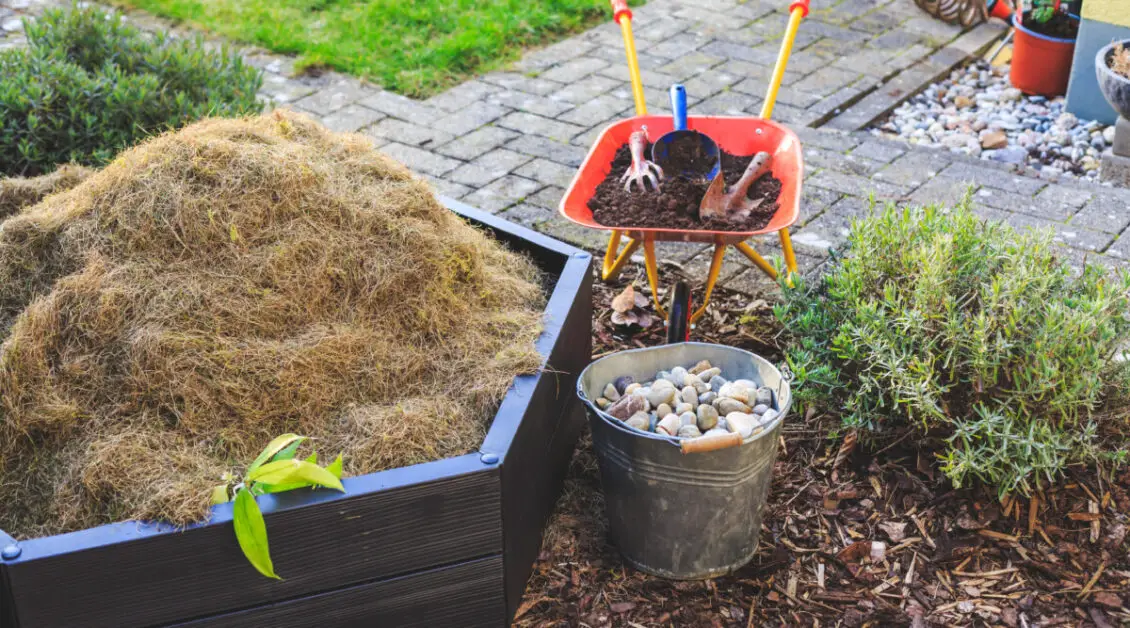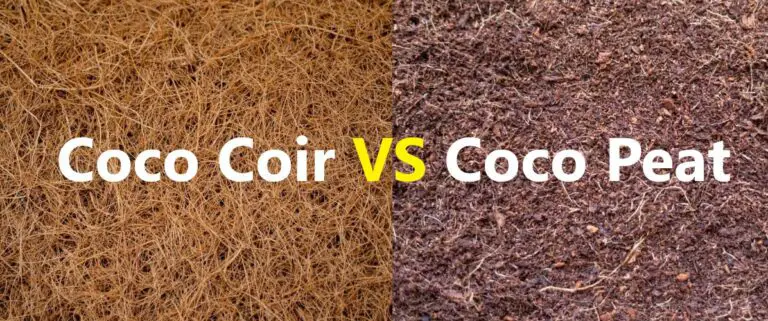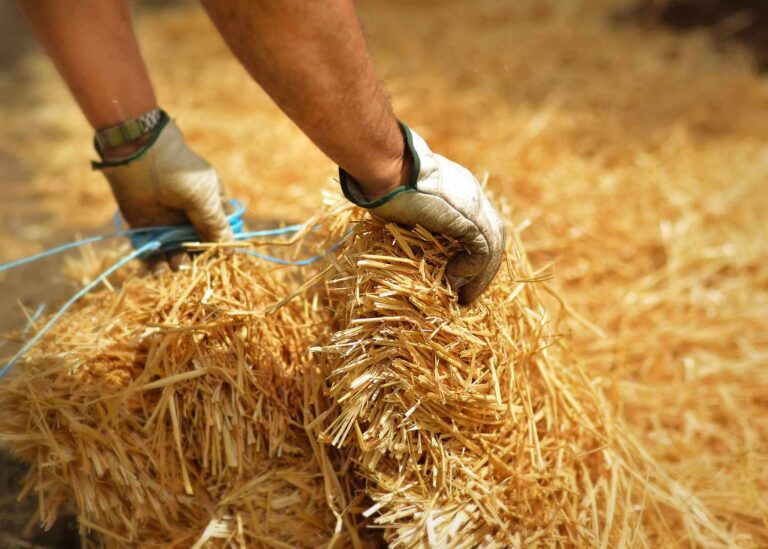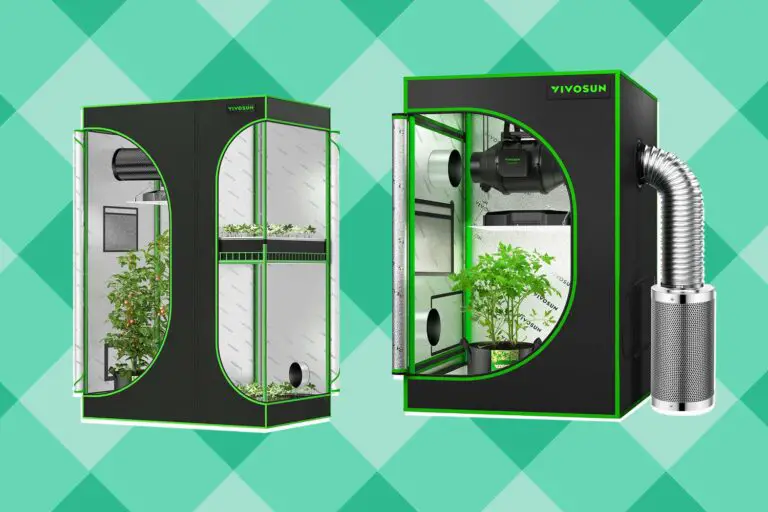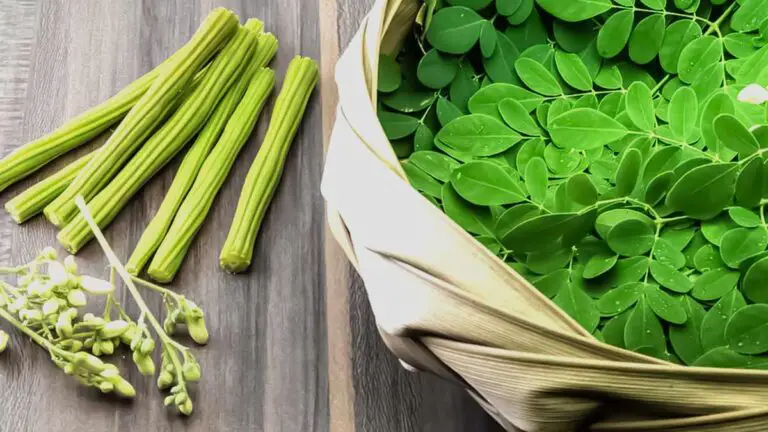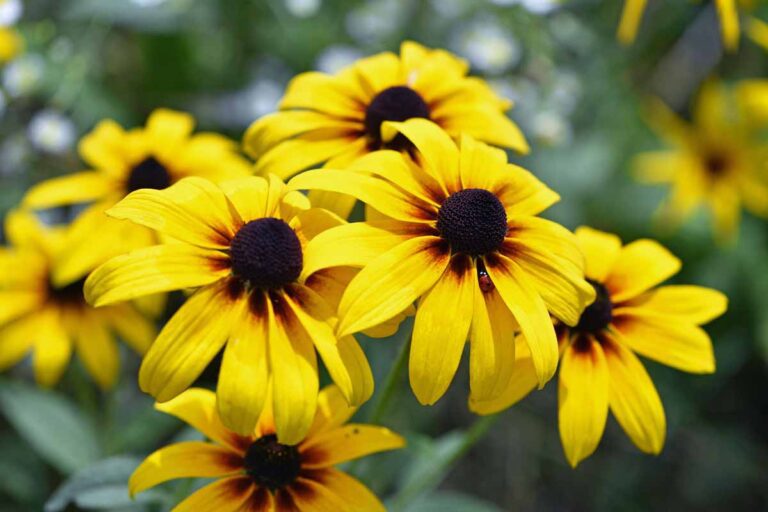15 Types of mulch to Boost Your Garden
Table of Contents
Organic Mulches
Organic mulches are materials derived from natural sources that decompose over time, adding valuable organic matter to the soil. They offer various benefits to the garden, including weed suppression, moisture retention, temperature regulation, and improvement of soil structure. Organic mulches, such as compost and well-rotted manure, act as natural fertilizers. As they break down, they release essential nutrients into the soil, providing a continuous source of nourishment for plants.
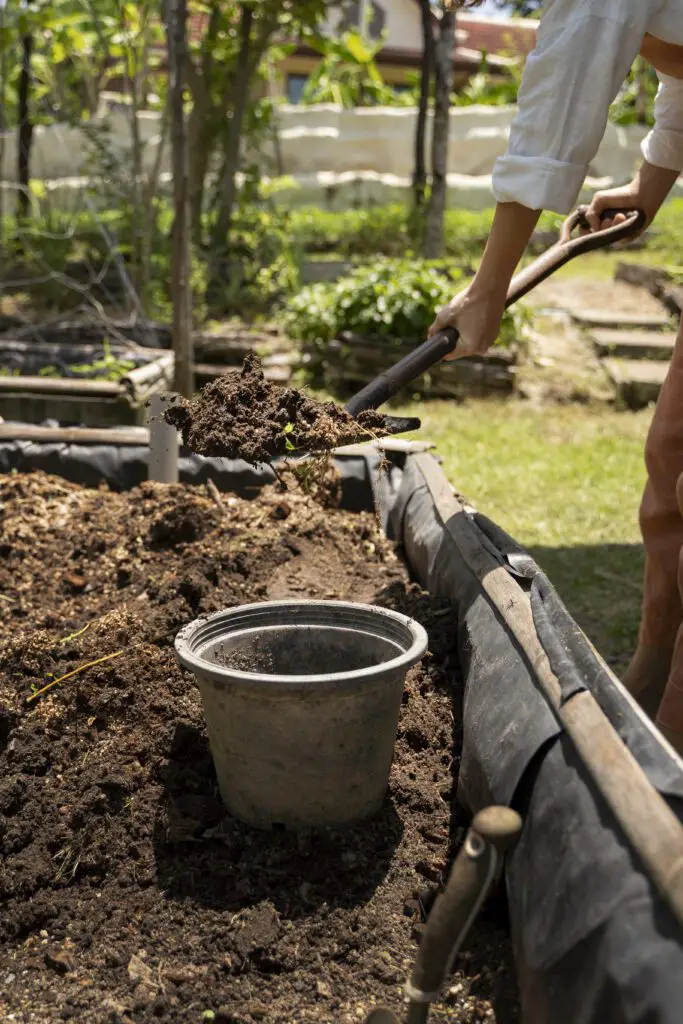
Organic mulches offer a sustainable and eco-friendly approach to garden management. When choosing a mulch type, consider the specific needs of your plants, the local climate, and the aesthetics you desire for your garden. Regular replenishment may be necessary as organic mulches break down over time, and this natural decomposition process contributes to the improvement of soil health.
Incorporating a variety of organic mulches based on the specific needs of plants and the local environment contributes to a resilient and thriving garden ecosystem. The synergy between organic mulches, soil organisms, and plant roots creates a dynamic and sustainable gardening approach. Choosing the right organic mulch depends on factors such as the type of plants, climate, and specific soil conditions in your garden. Regularly replenishing organic mulches is essential as they decompose and integrate into the soil, continually enriching it with organic matter and nutrients. Additionally, proper mulching practices, such as avoiding piling mulch against plant stems and maintaining an adequate layer thickness, ensure the best results for your garden.
Compost: Nutrient-rich mulch for Sustainable Gardening
Compost is a nutrient-rich mulch that offers sustainable benefits for your gardening endeavors. It is created through the decomposition of organic materials like kitchen scraps, yard waste, and plant trimmings. As these components break down, they release valuable nutrients into the soil, promoting healthy plant growth.
One of the major advantages of using compost as mulch is its ability to improve soil health. Compost adds organic matter to the soil, enhancing its structure and water-holding capacity. This increases the soil’s fertility and moisture retention, reducing the need for additional irrigation and fertilizers. Additionally, compost acts as a natural soil conditioner, improving aeration and drainage, which helps to prevent root rot and other soil-borne diseases.

Not only does compost enrich the soil, but it also helps to suppress weeds. A thick layer of compost mulch acts as a physical barrier, blocking sunlight from reaching weed seeds and preventing them from germinating. This reduces the need for manual weeding or the use of chemical herbicides, making compost an eco-friendly choice for gardeners. Moreover, as compost breaks down over time, it adds additional organic matter to the soil, further enhancing its weed-suppressive properties.
In conclusion, compost is a nutrient-rich mulch that offers numerous sustainable benefits for gardeners. Its ability to improve soil health, enhance fertility, retain moisture, and suppress weeds makes it an ideal choice for sustainable gardening practices. By utilizing compost mulch in your garden, you can promote healthy plant growth while reducing the need for synthetic fertilizers and harmful chemicals.
Straw Mulch: Insulation and Weed Suppression in Your Garden
Straw mulch is a popular choice among gardeners due to its effective insulation and weed-suppressing properties. When applied to garden beds, straw acts as a natural insulator, providing a protective layer that helps regulate soil temperature. This is particularly beneficial in regions with extreme weather conditions, as it helps plants withstand both hot summers and cold winters.
Furthermore, straw mulch is highly effective in preventing weed growth. By blocking sunlight from reaching the soil surface, it inhibits the germination and growth of weed seeds. As a result, gardeners spend less time and effort on weeding, allowing for more enjoyable and productive gardening experiences.
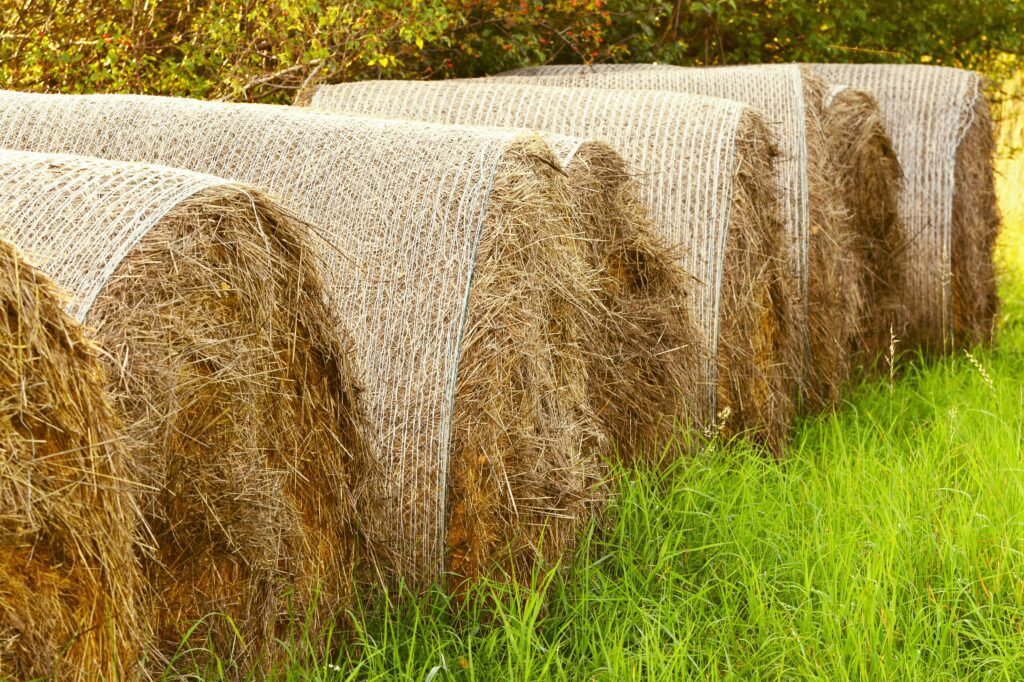
In addition to its practical benefits, straw mulch is also a sustainable option. It is a byproduct of grain production, making it readily available and affordable for gardeners. Its organic nature also means it will naturally break down over time, improving soil structure and fertility. Moreover, straw mulch can help conserve moisture in the soil, reducing the frequency of irrigation and promoting water efficiency in gardening practices.
Overall, straw mulch offers an excellent combination of insulation and weed suppression, making it a valuable addition to any garden. Its affordability, sustainability, and ability to improve soil health further enhance its appeal as a versatile and effective mulching solution. So, why not consider incorporating straw mulch into your garden and enjoy the benefits it has to offer?
Wood Chips: Aesthetic Appeal and Soil Moisture Retention
Wood chips are an excellent choice of mulch for gardeners who prioritize both aesthetic appeal and soil moisture retention. The natural beauty of wood chips can instantly enhance the overall look of your garden, creating a visually pleasing landscape. These chips come in a range of sizes, colors, and textures, allowing you to select the perfect option that complements your garden’s design.
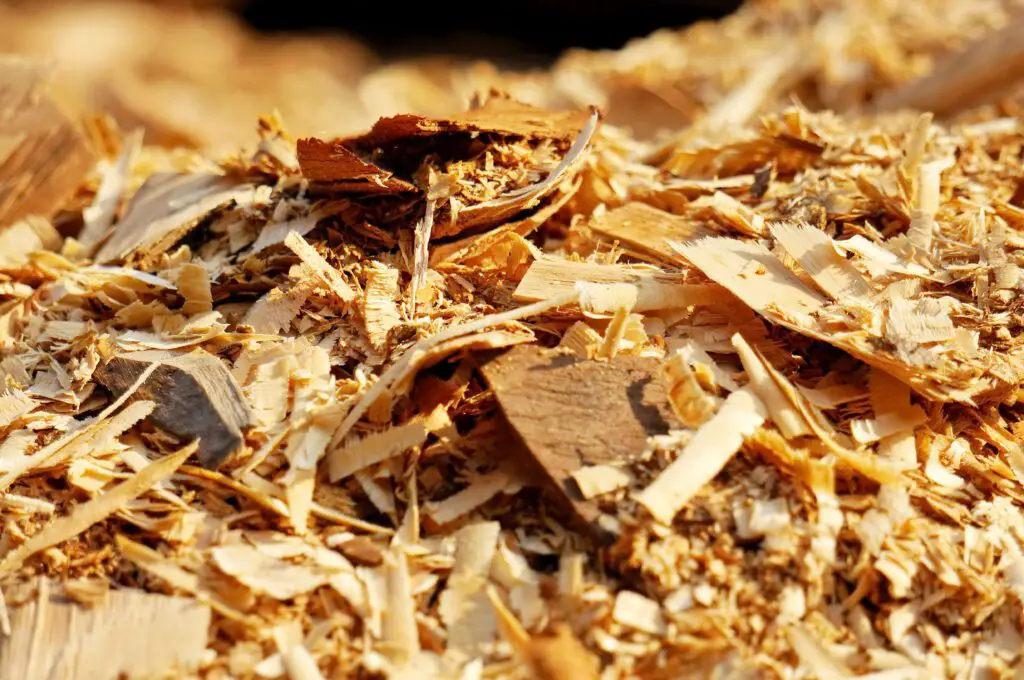
In addition to their visual appeal, wood chips also play a crucial role in maintaining soil moisture. When applied around plants and trees, they act as a protective barrier, preventing water evaporation from the soil surface. This helps in conserving water, especially in dry climates. By retaining moisture, wood chips promote healthy root growth, ensure efficient nutrient absorption, and enhance overall plant vitality. So, not only do wood chips beautify your garden, but they also provide the ideal conditions for your plants to thrive.
Bark Mulch: Protecting Plants from Extreme Temperatures
Bark mulch is a popular choice for gardeners seeking protection for their plants from extreme temperatures. With its insulating properties, bark mulch forms a protective layer over the soil, preventing drastic temperature fluctuations that can stress and damage delicate plants. This natural form of insulation also helps retain moisture, making it an excellent choice for areas prone to drought or arid conditions.
One of the key benefits of bark mulch is its ability to moderate soil temperature. During hot summer months, bark mulch acts as a barrier, reflecting sunlight and reducing heat absorption by the soil. This helps to keep the roots of plants cooler, preventing heat stress and promoting healthy growth. Similarly, during colder seasons, bark mulch provides a buffer against frigid temperatures, shielding the soil and roots from freezing conditions. This insulation effect is particularly beneficial for plants that are sensitive to extreme temperatures, such as perennials and ornamental shrubs.
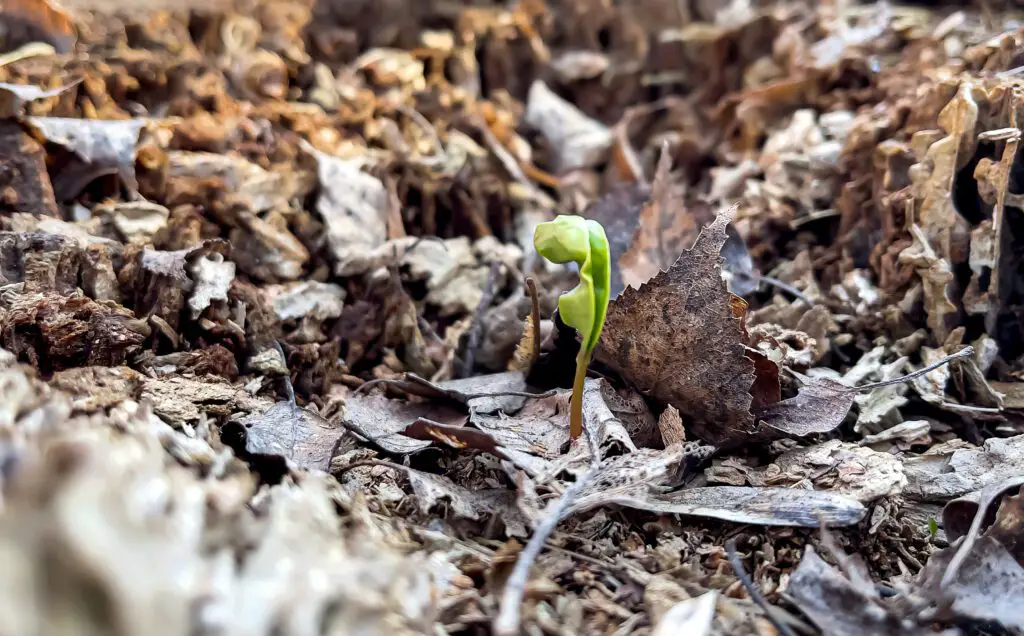
In addition to its thermal benefits, bark mulch also suppresses weed growth, which can further protect plants from competition for nutrients and water. By forming a natural barrier, bark mulch inhibits the germination and growth of many common garden weeds, reducing the need for herbicides or excessive hand-weeding. This not only saves time and effort for gardeners but also helps conserve resources and promotes a more sustainable gardening approach.
When selecting bark mulch, it is important to consider the type of bark used. Different tree species have varying properties, such as acidity levels, nutrient content, and decay rates. Hardwood bark mulches, such as oak or maple, are generally more durable and long-lasting, while softer woods like pine break down more quickly, contributing organic matter to the soil. Gardeners should choose a bark mulch that aligns with the specific needs of their plants and gardening goals.
In conclusion, bark mulch serves as a valuable ally in protecting plants from extreme temperatures. Its insulating properties help regulate soil temperature, preventing stress and damage to delicate plants. Furthermore, it suppresses weed growth, reducing competition for resources and promoting sustainable gardening practices. By incorporating bark mulch into their gardening routines, enthusiasts can create a more favorable environment for their plants, ensuring healthier and more flourishing gardens.
Pine Needles: Acidic Mulch for Acid-Loving Plants
Pine needles, commonly known as pine straw, serve as an excellent acidic mulch option for acid-loving plants. They are particularly beneficial for gardeners looking to optimize the growth and health of plants such as azaleas, rhododendrons, blueberries, and strawberries.
One of the primary advantages of using pine needles as mulch is their natural acidity. As pine needles break down over time, they release organic compounds that lower the soil’s pH level, making it more acidic. This is particularly important for acid-loving plants that thrive in slightly acidic soil conditions. In addition to providing an acidic environment, pine needles also help to conserve soil moisture by reducing evaporation and minimizing weed growth.
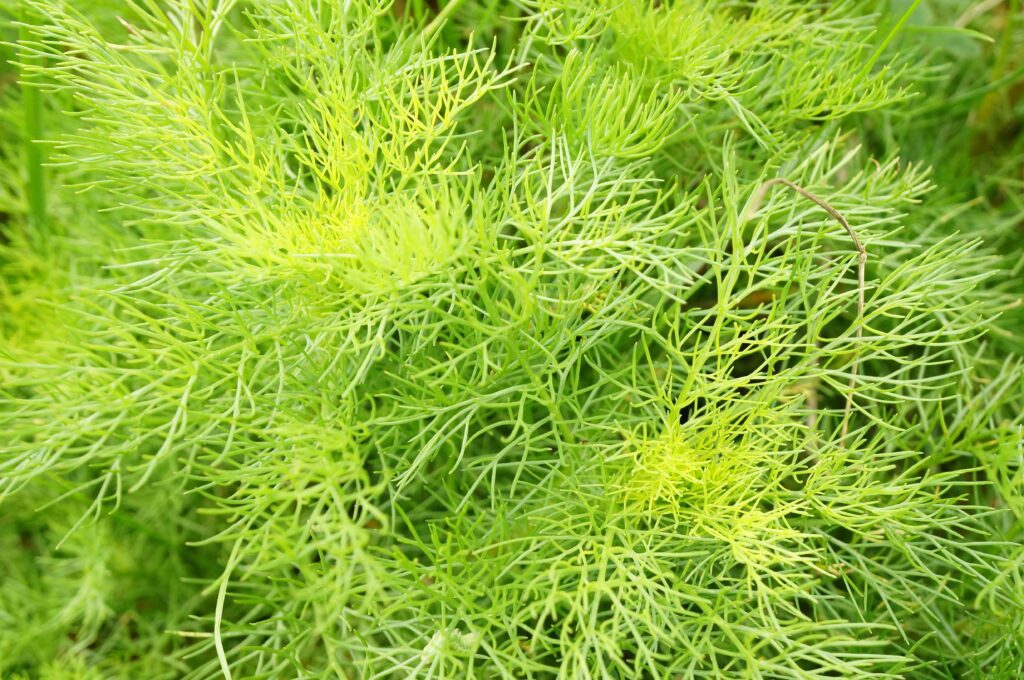
Moreover, pine straw mulch has the added benefit of being long-lasting. Due to the sturdy nature of pine needles, they take longer to decompose compared to other mulch options. This means that you won’t have to replace the mulch as frequently, saving you time and effort in the long run.
With their natural acidity, resilience, and moisture retention capabilities, pine needles offer an ideal mulching solution for gardeners aiming to create a thriving environment for acid-loving plants.
Grass Clippings: Free and Nutrient-Packed Mulch Option
Grass clippings are an excellent mulch option for gardeners, providing both cost savings and nutrient benefits. Most homeowners have access to grass clippings, making this mulch option readily available and cost-free. By using grass clippings as mulch, you are not only reducing waste but also recycling valuable nutrients back into your garden.
One of the key benefits of grass clippings as mulch is their nutrient content. As the clippings break down, they release nitrogen, potassium, and phosphorus, which are essential nutrients for plant growth. These nutrients help promote healthy root development, vibrant foliage, and overall plant vigor. Additionally, the grass clippings act as a natural weed suppressant, reducing the need for other weed control methods.
To use grass clippings as mulch, it is important to follow a few guidelines. Firstly, ensure that the grass clippings are pesticide-free, as any chemicals can harm your plants. Secondly, apply a thin layer of clippings, approximately 1-2 inches, around your desired plantings. This will allow for proper air circulation and prevent the clippings from matting and creating a barrier to moisture absorption. Lastly, avoid using thick clumps of clippings, as they can create clumps that prevent air and water from reaching the soil.
When used correctly, grass clippings can provide a wealth of benefits to your garden. They not only offer a cost-effective mulch option but also supply much-needed nutrients to support plant growth. So instead of discarding those grass clippings, put them to good use and watch your garden thrive.
Shredded Leaves: Eco-Friendly Mulch for Natural Weed Control
Shredded leaves are an excellent and eco-friendly option for mulching and controlling weeds in your garden. When leaves are shredded, they break down more quickly and evenly, providing a layer of organic matter that suppresses weed growth while enriching the soil.
One of the key advantages of using shredded leaves as mulch is their ability to naturally suppress weed growth. The layer of leaves acts as a barrier, preventing sunlight from reaching weed seeds and inhibiting their germination. Additionally, as the shredded leaves decompose, they release nutrients into the soil, promoting healthy plant growth and reducing the need for chemical fertilizers.
Furthermore, shredded leaves offer an environmentally friendly alternative to synthetic weed control methods, such as herbicides. By choosing to mulch with shredded leaves, you can minimize the use of harmful chemicals in your garden, creating a safer and more sustainable environment for your plants, beneficial insects, and the overall ecosystem.
To make the most of shredded leaves as mulch, it is important to apply them correctly. For instance, ensure the layer of leaves is a few inches thick, but not too thick to prevent airflow and water penetration. Additionally, it is recommended to avoid piling the leaves against plant stems or tree trunks to prevent moisture accumulation and potential disease issues. Overall, shredded leaves are a cost-effective and environmentally friendly mulching solution that can help you maintain a weed-free garden while nourishing your plants naturally. Stay tuned for the next section where we will explore another fascinating mulching option.
Newspaper: Affordable and Effective Mulching Solution
Newspaper mulch is an affordable and effective solution for gardeners looking to improve soil health and weed control. Made from recycled newspapers, this mulching option provides a range of benefits while being easy on the pocket.
Cocoa Hulls: Fragrant Mulch for Moisture Retention
Cocoa hulls are not only a fragrant addition to your garden but also a practical solution to help retain moisture. As a byproduct of cocoa production, these husks are an excellent source of organic mulch that can benefit your plants in multiple ways.
One of the primary advantages of cocoa hulls as mulch is their ability to retain moisture in the soil. Their fibrous texture helps create a protective layer on the surface, reducing evaporation and keeping the soil moist for longer periods. This can be particularly beneficial in dry climates or during periods of drought when water conservation is essential. Additionally, the cocoa hulls slowly decompose over time, releasing nutrients into the soil and further enhancing its fertility.
Rubber Mulch: Durable and Low-Maintenance Option
Rubber mulch is a popular choice for gardeners seeking a durable and low-maintenance option. Made from recycled rubber tires, this type of mulch provides numerous benefits for both plants and garden enthusiasts. Its durability allows it to withstand harsh weather conditions, making it a long-lasting option for gardens in various climates.
One of the key advantages of rubber mulch is its low-maintenance nature. Unlike traditional organic mulches that require regular replacement and replenishment, rubber mulch can last for several years without needing to be replaced. This not only saves time and effort but also reduces the overall cost of maintaining a garden. Additionally, rubber mulch does not decompose or break down over time, eliminating the need for constant monitoring or reapplication.
Furthermore, rubber mulch acts as an effective weed suppressant. Its dense texture and non-porous nature create a barrier that prevents weed growth, minimizing the need for herbicides or manual weed removal. This feature not only saves gardeners from the tedious task of weeding but also helps to maintain a clean and tidy garden appearance.
In addition to its low-maintenance benefits, rubber mulch is also an eco-friendly option. By repurposing old tires, it contributes to waste reduction and landfill diversion. This sustainable aspect appeals to environmentally conscious gardeners who prioritize reducing their carbon footprint.
Overall, rubber mulch offers a durable and low-maintenance alternative to organic mulches. Its longevity, weed suppression capabilities, and eco-friendly composition make it a practical choice for gardeners aiming for sustainable and hassle-free gardening.
Gravel: Decorative Mulch with Excellent Drainage
Gravel mulch, with its excellent drainage properties and decorative appeal, is a popular choice for gardeners seeking both functionality and aesthetics. This type of mulch consists of small stones or pebbles that vary in size, providing an eye-catching contrast to plants and flower beds. But it’s not just about looks – gravel mulch offers several practical benefits that make it a valuable addition to any garden.
One of the key advantages of gravel as a mulch is its ability to facilitate water drainage. The small gaps between the stones allow rainwater to easily percolate into the soil while preventing excess moisture from accumulating around plant roots. This is particularly beneficial in areas with heavy rainfall or clay soils prone to waterlogging. Additionally, gravel mulch reduces the risk of soil erosion by protecting the top layer of soil from being washed away during heavy downpours. Its ability to maintain proper moisture balance in the soil creates a healthy environment for plant growth, enabling roots to breathe and preventing issues such as root rot.
Moreover, gravel mulch serves as a durable option that requires minimal maintenance. Unlike organic mulches that decompose over time, gravel does not break down, reducing the need for frequent reapplication. This makes it a cost-effective choice in the long run. Additionally, gravel mulch acts as a natural weed barrier by inhibiting weed growth. The stones create a physical barrier that blocks sunlight from reaching weed seeds, preventing them from sprouting and competing with your desired plants for nutrients and space. By reducing the need for weeding, gravel mulch saves both time and effort, allowing gardeners to focus on other aspects of gardening.
Seaweed: Nutrient-Dense Mulch for Coastal Gardens
Seaweed is a nutrient-dense mulch that is particularly beneficial for coastal gardens. This natural resource offers several advantages that can enhance the health and productivity of your plants. One of the key benefits of seaweed mulch is its high mineral content. As seaweed absorbs nutrients from the ocean, it becomes rich in essential elements such as potassium, phosphorus, and trace minerals. These nutrients are crucial for the growth and development of plants and can promote stronger root systems, improve fruit and flower production, and enhance overall plant vitality.
Furthermore, seaweed has the remarkable ability to enhance soil structure and moisture retention. When spread as mulch, seaweed forms a protective barrier over the soil surface, reducing evaporation and minimizing weed growth. As it breaks down, the seaweed releases polysaccharides and other organic compounds that act as soil conditioners, improving soil tilth and texture. This can create an ideal environment for beneficial microorganisms and earthworms to thrive, promoting better nutrient uptake and soil aeration. Additionally, the natural salts in seaweed can enhance soil fertility and buffer soil pH, making it an excellent choice for gardens with acidic or alkaline soil conditions.
Cardboard: Weed Blocker and Moisture Retainer
When it comes to mulching your garden, cardboard is a fantastic option that serves multiple purposes. Not only does it act as an effective weed blocker, but it also helps retain moisture in the soil. By placing sheets of cardboard around your plants and covering them with a layer of organic matter, such as wood chips or compost, you create a barrier that inhibits the growth of weeds by blocking sunlight from reaching them. This natural weed control method reduces the need for chemical herbicides, which can be harmful to the environment and to the health of your plants.
In addition to weed suppression, cardboard also helps retain moisture in the soil, especially important in dry climates. The cardboard acts as a protective layer that slows down evaporation, preventing water from escaping quickly and allowing it to penetrate deeply into the soil. This helps to keep your plants well-hydrated and reduces the frequency of watering, saving both time and water resources. By using cardboard as a mulch, you can create a more sustainable and water-efficient garden while simultaneously minimizing weed growth.
Pea Gravel: Versatile Mulch for Walkways and Plant Beds
Pea gravel is a versatile and practical mulch option that can be used in both walkways and plant beds. Its small, rounded shape allows for easy movement and creates a visually appealing texture in garden spaces. Not only does pea gravel provide an attractive aesthetic, but it also offers several functional benefits.
One of the key advantages of using pea gravel as mulch is its excellent drainage properties. The gaps between the small pebbles allow water to flow freely, preventing the accumulation of excess moisture around plant roots. This is particularly beneficial for plants that require well-drained soil, helping to prevent root rot and other water-related problems. Additionally, the gravel acts as a natural barrier, reducing the likelihood of soil erosion in plant beds and providing stability to walkways even in wet conditions.
Another advantage of using pea gravel as mulch is its ability to suppress weeds. The dense layer of gravel prevents sunlight from reaching weed seeds, inhibiting their growth and minimizing the need for frequent weeding. This can be especially useful in walkways and other areas where weed control is desired but regular maintenance may be challenging.
In conclusion, pea gravel is a versatile mulch option that offers both functional and aesthetic benefits. Its drainage properties and weed suppression capabilities make it an excellent choice for both walkways and plant beds. By using pea gravel as mulch, gardening enthusiasts can create visually appealing spaces while promoting healthy plant growth and minimizing maintenance tasks.
By exploring these various mulch options, you
Compost, often referred to as “black gold” in the gardening world, is a nutrient-rich mulch that is essential for sustainable gardening. Made from organic matter such as kitchen scraps, yard waste, and even coffee grounds, compost provides plants with a rich source of nutrients, including nitrogen, phosphorus, and potassium. These nutrients are released slowly over time, ensuring that your plants receive a steady supply of food to promote healthy growth.
In addition to its nutrient content, compost also enhances soil structure by improving its water-holding capacity, drainage, and aeration. This is particularly important in preventing soil erosion and nutrient runoff, which can lead to environmental pollution. Moreover, compost acts as a natural soil amendment, enriching the soil with beneficial microorganisms that promote plant health and suppress harmful pathogens. By using compost as mulch in your garden, you not only nourish your plants but also contribute to the conservation and sustainability of our precious natural resources.
Are all mulch options suitable for all types of plants?
No, different plants have different needs when it comes to mulch. Some may prefer acidic mulch like pine needles, while others may benefit from nutrient-rich compost. It’s important to choose the right mulch for your specific plants.
Can I use grass clippings as mulch?
Yes, grass clippings can make for a great mulch option. They are free and packed with nutrients that can benefit your plants. Just make sure to use them in thin layers to avoid matting and excessive heat build-up.
How often should I replenish wood chips mulch?
Wood chips are long-lasting, and you may only need to replenish them every 2-3 years. However, it’s a good idea to regularly check the depth of the mulch and add more if necessary to maintain the desired moisture retention and weed suppression.
Can I use shredded leaves as mulch in my vegetable garden?
Absolutely! Shredded leaves are a fantastic eco-friendly mulch option, especially for natural weed control in vegetable gardens. They provide insulation, retain moisture, and eventually break down to enrich the soil.
Is rubber mulch safe for plants and the environment?
Rubber mulch is a durable and low-maintenance option, but it may not be suitable for all plants and environments. Some studies suggest that it can release harmful chemicals over time, so it’s important to consider these factors and choose alternatives if necessary.
Can cardboard be used as mulch for flower beds?
Yes, cardboard can be used as an effective weed blocker and moisture retainer in flower beds. It acts as a barrier, preventing weed growth while allowing water to penetrate the soil. Just make sure to remove any tape or stickers from the cardboard before using it.
Are cocoa hulls safe for pets if used as mulch?
Cocoa hulls can be toxic to pets if ingested in large quantities. It’s recommended to avoid using cocoa hulls as mulch if you have pets that may be tempted to eat it. Stick to safer options like wood chips or straw mulch.
Can gravel be used as mulch for all types of plants?
Gravel is primarily used as decorative mulch and works best for plants that prefer excellent drainage. It may not be suitable for plants that require moisture retention, as gravel doesn’t retain water like other mulch options. Consider the specific needs of your plants before using gravel as mulch.
Is seaweed mulch only suitable for coastal gardens?
While seaweed mulch is particularly beneficial for coastal gardens due to its nutrient density and salt content, it can also be used in other gardens. However, you may need to rinse the seaweed thoroughly to remove excess salt before using it as mulch.
Can I use newspaper as mulch for vegetable gardens?
Yes, newspapers can be an affordable and effective mulching solution for vegetable gardens. It can help suppress weeds, retain moisture, and gradually break down to improve the soil. Just make sure to wet the newspaper before applying it and cover it with a layer of compost or other organic mulch for a neater appearance.

Kanike Sreekanth, a prolific writer at SouthElMonteHydroponics, brings a unique blend of creativity and scientific rigor to the table. With a degree in Horticulture from a prestigious institution, Kanike’s expertise spans hydroponic farming, plant biology, and agricultural sustainability. Their passion for exploring innovative cultivation methods and promoting environmental stewardship drives them to uncover new insights in the realm of hydroponics. Kanike’s writing serves as a conduit for sharing their knowledge and inspiring others to embrace alternative farming practices for a more sustainable future.

